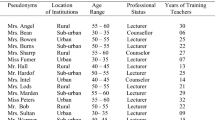Prevention education is seen as a key component in addressing school violence. Three hundred and three fourth grade students in 9 elementary schools in a predominantly rural community were provided a specialized program of character education as a prevention tool to reduce the potential for deviant behavior. Students in 3 schools were in the no treatment control condition. Students in the remaining 6 schools received a school-based and curriculum driven character education program; two of the schools were in the curriculum only condition while in four of the schools students were randomly selected to receive a protocol-driven summer academic (6 weeks) and experiential education/program. The intervention results suggest that the students who received the academic/camp intervention had the greatest increases in social competence, the largest gains in reading achievement, and the largest increase in parental interaction. Recommendations for prevention education are discussed at the primary, secondary and tertiary levels.



Similar content being viewed by others
References
American Psychiatric Association (1994). Diagnostic and statistical manual—Revised (DSM-IVR). Washington, DC: American Psychiatric Association.
Beane, A. L. (2001). The bully free classroom. Minneapolis, MN: Free Press Publishing Incorporated.
Benninga, J. S., & Wynne, E. A. (1997). Keeping in character: A time-tested solution. Phi Delta Kappan, 79(6), 439–445, 448.
Centers for Disease Control and Prevention (2003). Web-based Injury Statistics Query and Reporting System (WISQARS). Retrieved February 17, 2003 from http://www.cdc.gov/ncipc/wisquars.
Cornell, D. G. (2000). Effective practices in youth violence prevention. Richmond, Virginia. Retrieved June 29, 2005 from http://www.ilppp.virginia.edu/Publications_and_Reports/EffPracYouth.html.
DeVoe, J. F., Peter, K., Kaufman, P., Ruddy, S. A., Miller, A. K., Planty, M., et al. (2002). Indicators of school crime and safety. Washington, DC: U.S. Departments of Education and Justice. Retrieved June 29, 2005 from http://nces.ed.gov/pubs2003/2003009.pdf.
Edwards, D., & Mullis, F. (2003). Classroom meeting: Encouraging a climate of cooperation. Professional School Counseling, 7, 20–28.
Frey, K., Hirschstein, M., & Guzzo, B. (2000). Preventing aggression by promoting social competence. Journal of Emotional and Behavioral Disorders, 8, 102–113.
Hansen, W. B. (1997). All Stars fourth and fifth grade program. Durham, NC: Tanglewood Research Incorporated.
The Josephson Institute of Ethics (2004). Character counts. Retrieved March 31, 2004 from http://charactercounts.org/.
McEvoy, A., & Welker, R. (2000). Antisocial behavior, academic failure, and school climate: A critical review. Journal of Emotional and Behavioral Disorders, 8, 130–141.
McMahon, S., Washburn, J., Felix, E., Yakin, J., & Childrey, G. (2000). Violence prevention: Program effects on urban preschool and kindergarten children. Applied and Preventive Psychology, 9, 271–281.
Miller, T. W. (1998). Children of trauma. Madison, CT: International Universities Press Incorporated.
Miller, T. W. (1999). The psychologist with 2020 vision. Consulting Psychology Journal, 50(1), 25–35.
Miller, T. W., & Veltkamp, L. J. (1996). Clinical handbook of child abuse and neglect. Madison, CT: International Universities Press Incorporated.
Taub, J. (2002). Evaluation of the Second Step violence prevention program at a rural elementary school. School Psychology Review, 31, 186–201.
United States Department of Education (2002). Exemplary and promising safe, disciplined, and drug-free schools. Portsmouth, NH: U.S. Department of Education.
Walker, H. M., Horner, R. H., Sugai, G., Bullis, M., Sprague, J. R., Bricker, D., et al. (1996). Integrated approaches to preventing antisocial behavior patterns among school-age children and youth. Journal of Emotional and Behavioral Disorders, 4, 194–209.
ACKNOWLEDGMENTS
The authors wish to acknowledge the assistance of Thomas Holcomb, Ed.D.; Janeen Klaproth; Jill Livingstone, MLS; Tag Heister, MLS; Deborah Kessler, MLS; Amy Pierce, Katrina Scott, Miranda Rogers, and Kate Smith, Library Services; Lon Hays M.D., Allen Brenzel, M.D., and Cathy Martin, M.D., Department of Psychiatry; and Brenda Frommer for their contributions to the completion of this manuscript. Funding from the Center for Prevention Research and National Institute on Drug Abuse Contract #05312 supported, in part, this research.
Author information
Authors and Affiliations
Corresponding author
Rights and permissions
About this article
Cite this article
Miller, T.W., Kraus, R.F. & Veltkamp, L.J. Character Education as a Prevention Strategy in School-Related Violence. J Primary Prevent 26, 455–466 (2005). https://doi.org/10.1007/s10935-005-0004-x
Published:
Issue Date:
DOI: https://doi.org/10.1007/s10935-005-0004-x




